/
Swiss AI Enters a New Era: inait SA and the Rise of Digital Brains
with inputs from Richard Frey, CEO inait SA

In March 2025, Microsoft announced a strategic partnership with a little-known Swiss AI startup. The move did not target another LLM vendor or cloud-native automation tool. Instead, it focused on something radically different: a digital brain. Lausanne-based inait is building biologically inspired software systems that simulate the brain’s reasoning capabilities. Just like biological organisms, they are machines that learn, adapt, and reason.
The AI Paradigm Shift Starts in Switzerland

For decades, artificial intelligence has advanced by analyzing patterns and optimizing statistical outcomes. But the founders of inait believe this path leads to a plateau. Their alternative? Emulate the most powerful general intelligence system in existence: the mammalian brain. By simulating how neurons learn cause and effect in real time, inait is creating machines capable of applying knowledge across unfamiliar tasks and contexts.
With this approach, inait is pioneering a new category of AI, one that challenges the boundaries between software and cognition. The implications are enormous, not just for enterprise applications, but for investors searching for IP-rich, globally scalable technology born at the intersection of neuroscience and computation.
From Digital Brains to Algorithms: What inait SA Actually Does
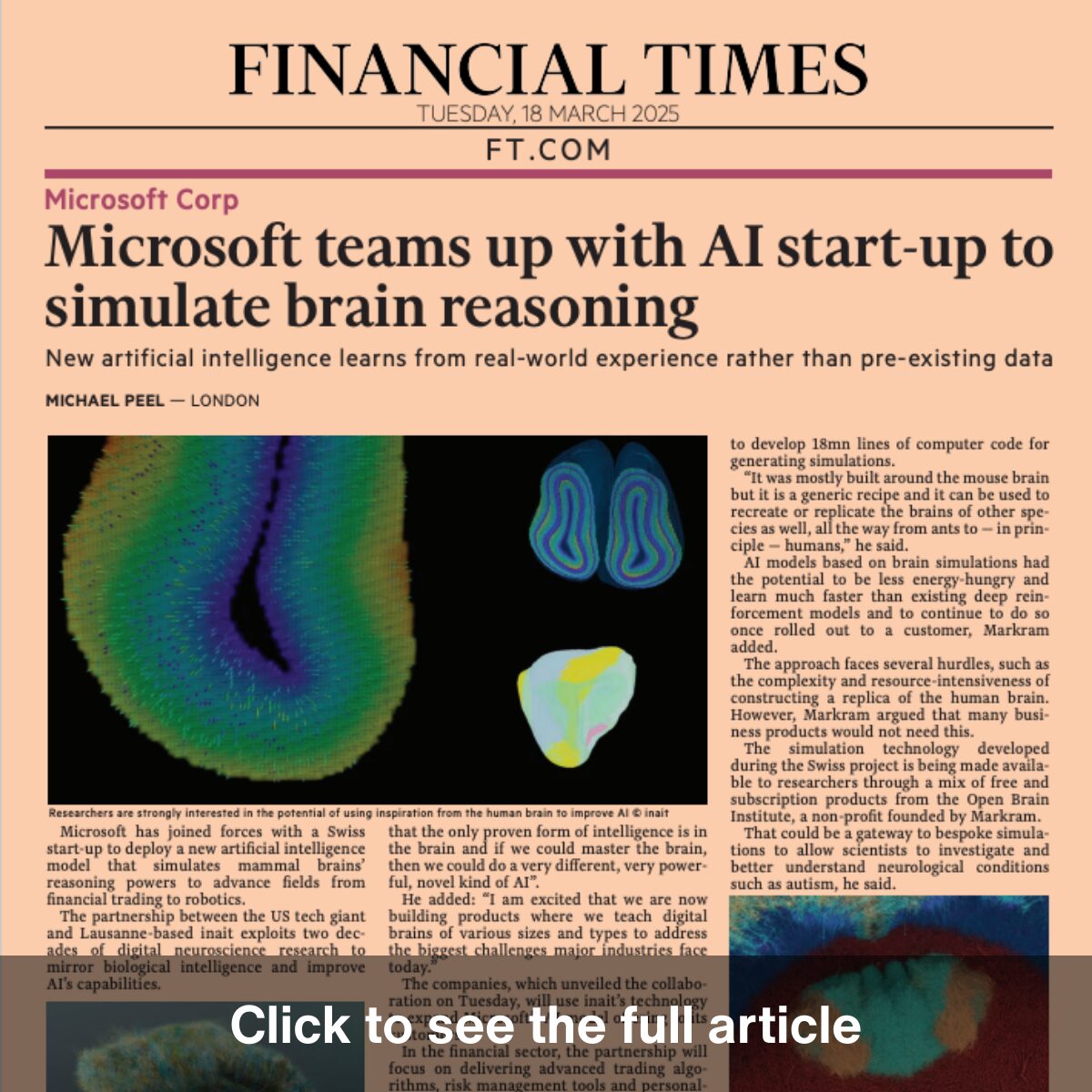
inait SA was founded in 2018 by world-leading neuroscientist Henry Markram, who in the coming years assembled a top-class expert team: Richard Frey, an experienced business manager and innovation expert with over 20 years of track record in global organisations, joined in 2020 as CEO after having organised inait’s Seed B financing round at the end of 2019. Daniel Lütgehetmann, a highly skilled mathematician, joined inait at inception and was appointed CTO in 2021. Together they lead a cross-functional team of hand-selected talents in neuroscience and AI. For six years, inait operated in stealth mode, working quietly on its breakthrough platform: AI with digital brains.
These are computational systems designed for causal learning, adapting continuously based on real-world experience, in ever-changing virtual or real-world environments, and ultimately for reasoning independently. Unlike large language models, which require enormous datasets and energy to train, inait’s digital brain AI can learn incrementally, more like biological brains do, whatever their size.
inait’s models use the architecture of digital brains, i.e. the architecture of real brains, and not some human-engineered simplified form of it. On this basis, inait has developed its own computational models that do not rely on statistical correlations. Instead, they apply learned rules of causality: how specific actions lead to specific consequences and then use this learning framework to make decisions in new, unfamiliar and changing environments. This allows them to generalize, plan, and act far beyond the capabilities of most conventional AI. The key components are:
- a digital brain with a neural network architecture as given by an actual biological brain;
- a proprietary neural code that allows them to operate these digital brains and a proprietary learning algorithm enabling causal learning and structured decision-making.
Moreover, inait encapsulates its pioneering digital brain technology within layers of conventional AI (LLMs or CNNs) to insert data and/or interface with users, to yield what inait calls inait Adaptive Machines (iAMs). These machines blend retrospective intelligence with proactive adaptability, continuously learning “on the factory floor” without energy-intensive data refreshes or retraining. iAMs don’t merely react, they self-learn the set of cognitive skills required to interact intelligently in any environment, which is perfect for adaptive intelligence in a number of industry verticals.
After having built a number of technology performance proof points, notably in forecasting and virtual physics gyms to solve a wide range of physics tasks, inait’s initial industry applications are now focused on two domains:
In fintech and financial services, inait’s AI solutions boost autonomous trading strategies, adaptive risk modelling and portfolio optimization. This will now, in collaboration with Microsoft, be rolled out to investment banks, and also be extended to support additional high-impact finance industry use cases more generally and beyond trading applications.
In robotics and industrial automation, the focus is on adaptive agents, i.e. machines that learn from their environment, refine their behaviour in motion and can adapt to changing circumstances as they often occur in manufacturing environments. Currently trained for a selected number of high impact use cases in sophisticated virtual environments, this is expected to go to factory floor environments in the near future.
In a next phase, inait plans to extend its applications to gaming (NPCs for example), virtual reality, healthcare, autonomous vehicles and many more verticals.
Development Stage and Funding Trajectory
inait SA is no longer in the theoretical or exploratory R&D phase. It has chosen to operate under the radar for almost six years, so it can, when ready, communicate based on results and performance, and not mere ideas and concepts. inait now stands on solid scientific and technological foundations and is actively transitioning into its commercial scaling phase. Its AI solutions are now deployable software modules, currently being integrated into enterprise pipelines through its strategic partnership with Microsoft.
“We see Microsoft as our ideal partner, for go-to-market and more, a trusted brand with a strong culture, with deep industry access and a global reach, as well as a great ecosystem that includes their own AI and that of their partner companies. With our digital brain AI we bring something unique to them and can focus on the most impactful industry use cases and our continuous AI innovation.”
– Richard Frey, CEO
inait employs over 30 people, mainly based in Lausanne, including hand-selected former researchers of EPFL and the Blue Brain Project that built the original digital brain, as well as technologists from global AI firms. These are not generalists, but domain experts such as neuroscientists, mathematicians, systems engineers and data scientists, working hand-in-hand from core research to industry applications. The result is a unique AI platform that sits at the intersection of neuroscience and machine intelligence: a software-based digital brain AI that can make decisions and reason through complex and changing environments.

Since inception, inait has raised some CHF 45 million across two Seed rounds, supported entirely by private investors. It is now raising a substantial Series A round, to scale resources and to fund its commercial rollout across fintech and robotics, expand its engineering and go-to-market teams, and extend its AI platform into additional industry verticals. The company’s unique assets, i.e. access to the world’s most accurate digital brains and inait’s proprietary IP, notably its neural code and learning algorithm to operate such digital brains, give the company a strong and defensible position in a market crowded with statistical AI clones. For investors looking for the next frontier in Swiss artificial intelligence, inait offers something rare: world-class science and technology, clearly differentiated and proven in initial industry solutions, and a clear path to monetisation.
Henry Markram: The Visionary Behind the Brain
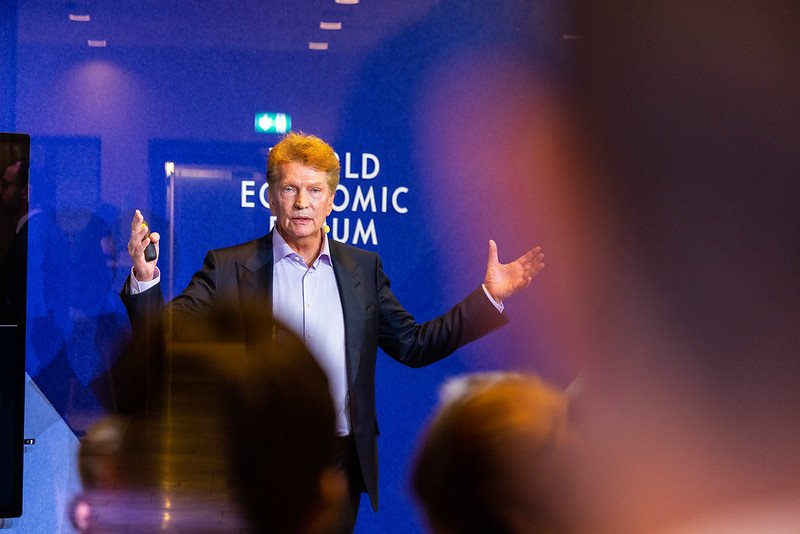
Few scientists straddle the divide between neuroscience, AI and business as seamlessly as Henry Markram. A neuroscientist trained across institutions like the NIH, Max Planck, and UCSF, Markram became internationally known for his work on synaptic plasticity and real-time learning. But what distinguishes his career is the conviction that brains can only be better understood by digitally reconstructing its biological substrate.
Markram’s career trajectory was shaped by a singular mission: to open the black box of the brain and rebuild it as a functioning system. His research focused on how neurons form networks, how synapses adapt in real time, and how memories are encoded through constantly shifting patterns rather than fixed data points. These insights drove the Blue Brain Project to rebuild the mammalalian brain in digital format (what most experts considered impossible at the time and is now done) and also form the intellectual foundation of inait’s digital brain AI models.
What sets Markram apart is not only the depth of his neuroscience knowledge but the vision of how to apply it for advancing scientific research, technology innovation and ultimately finding useful business applications. His belief was that in order to progress in understanding the brain, a digital copy needed to be built. This led to the establishment of the Blue Brain Project over twenty years ago, one of Switzerland’s most ambitious scientific undertakings. The Blue Brain Project concluded in 2024 and now makes its digital brains and brain simulation laboratories accessible to the global scientific community via the Open Brain Institute.
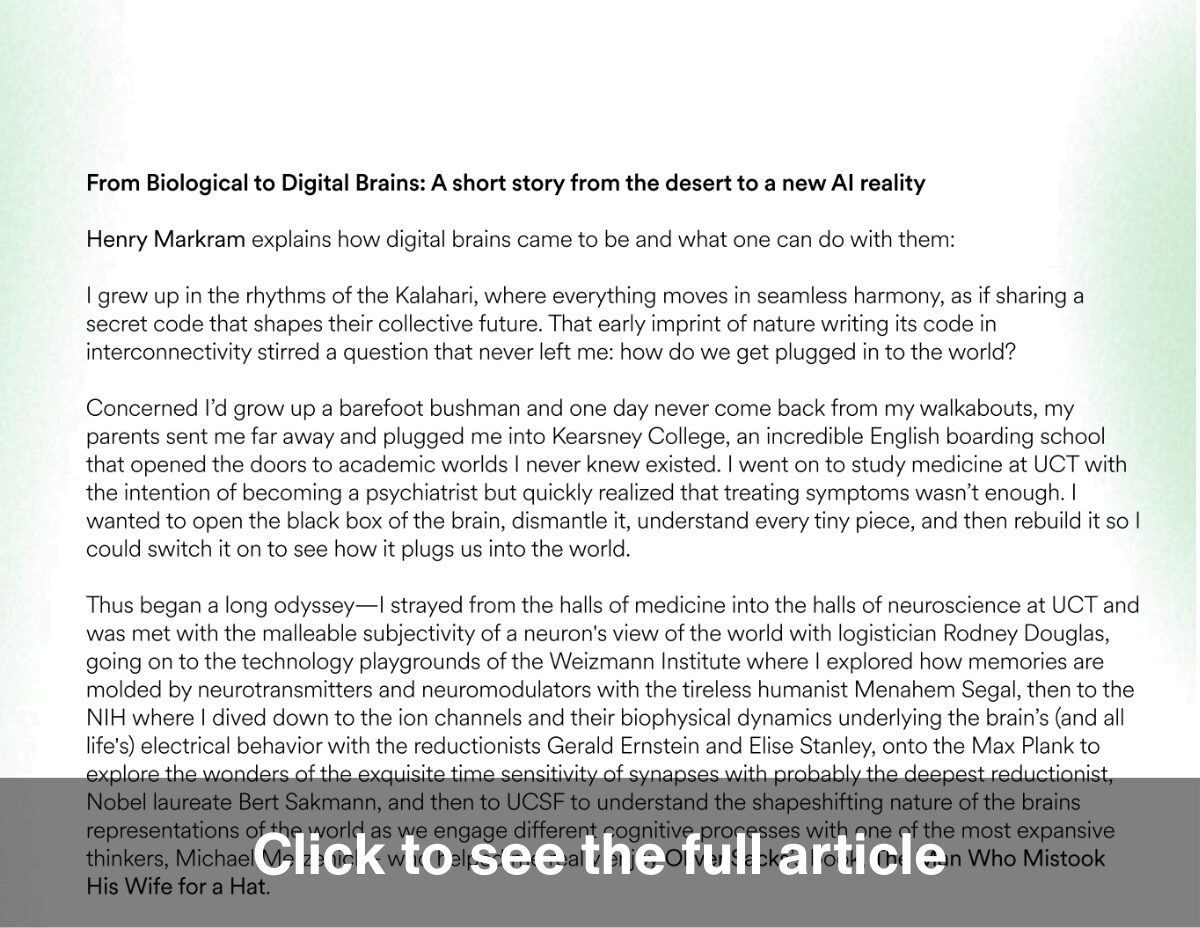
Anticipating that digital brains would be an ideal biological architecture to develop a novel kind of AI, Markram founded inait, with the idea to use these digital brains for AI. inait is partnering with the Open Brain Institute and uses these digital brains for the development of its innovative AI, so that they can learn to solve real-world challenges.
“What we’re doing at inait is only possible because we can build on Henry’s whole life of researching the brain, including a formula on how to build digital brains that he and his Blue Brain team developed over the last two decades. On this strong scientific foundation, we have built our unique inait AI, as a software today and ultimately to be embedded into hardware. It is literally decades of foundational science being brought to commercial life.”
– Richard Frey, CEO
The Blue Brain Project: A National Infrastructure for Intelligence
The Blue Brain Project was launched in 2005 as a national initiative supported by CHF 300 million in Swiss Federal funding and over 1000 scientists involved in the project over its lifetime. Led by EPFL, the project aimed to reconstruct mammalian brain circuits in silico, enabling researchers to simulate and test neural function at unprecedented resolution. Over two decades, the project produced biologically accurate simulations of brain regions like the neocortex and hippocampus, initially powered by IBM’s Blue Gene supercomputers and today made available in a cloud environment.

These simulations weren’t theoretical. They were computational reconstructions based on hard biological data, captured through years of imaging, recording, and statistical modeling. By the time the project concluded in 2024, its outputs included over 18 million lines of code, mapping cell types, network topologies, and synaptic functions.
In 2024, the Blue Brain Project transitioned into the Open Brain Institute (OBI), a nonprofit dedicated to open science and continued simulation research. inait SA partners with the OBI to apply these digital brain models, marking the first time this national infrastructure has been deployed for enterprise and industrial applications.
Microsoft Partnership: Validation and Global Scale
In March 2025, Microsoft announced a strategic partnership with inait SA. Microsoft is integrating inait’s digital brain AI into its Azure AI platform, making it available for enterprise customers in financial services, manufacturing and robotics in a first phase. For inait, the collaboration validates both its technology and its business model. For Microsoft, it extends its AI portfolio into a novel category of AI, cognitive AI or how inait calls it “adaptive AI”, an area where traditional LLMs fall short.
“Their neuroscience-inspired technology is truly innovative, and we are pleased to collaborate with them to bring these advancements to market.”
– Catrin Hinkel, CEO Microsoft Switzerland
The partnership includes joint research, joint product development, co-selling arrangements, and cloud deployment on Azure. Financial sector applications include algorithmic trading systems that adapt in real time to market changes, and advisory engines that personalize portfolio strategies through behavioral modeling. In manufacturing and robotics, the partnership is enabling machines that can adapt to changing environments without being explicitly programmed on large data lakes.
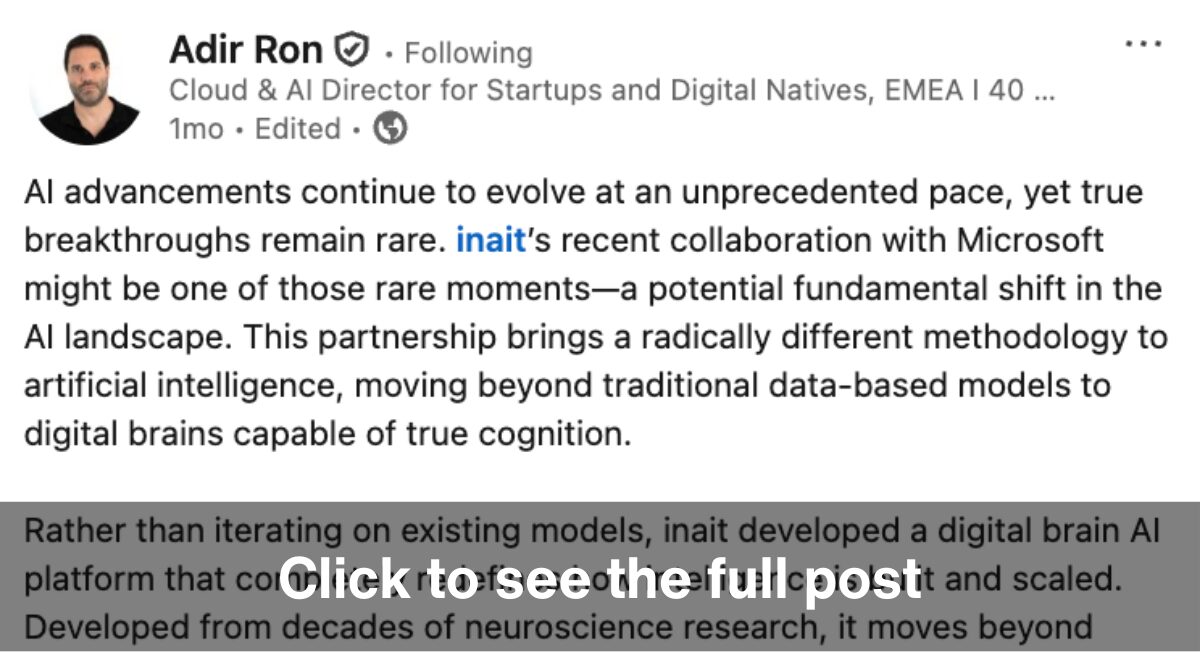
Microsoft executives have praised inait’s novel approach to cognition. “Inait is pioneering a new AI paradigm,” said Adir Ron, EMEA Director for Cloud and AI at Microsoft. “This goes beyond data models—it’s digital cognition that reflects how real brains learn.” With this deal, inait gains scale, credibility, and global reach. Microsoft gains access to one of the most scientifically grounded AI platforms to emerge in a decade.
The Swiss AI Ecosystem
Switzerland has quietly become one of the most advanced AI ecosystems in the world. Anchored by ETH Zurich and EPFL, it hosts leading global research institutions, major AI research labs from Big Tech, and a government that actively supports innovation. Zurich ranks #2 in Europe for AI talent density, and Switzerland has been the #1 country in the Global Innovation Index for 13 years running.
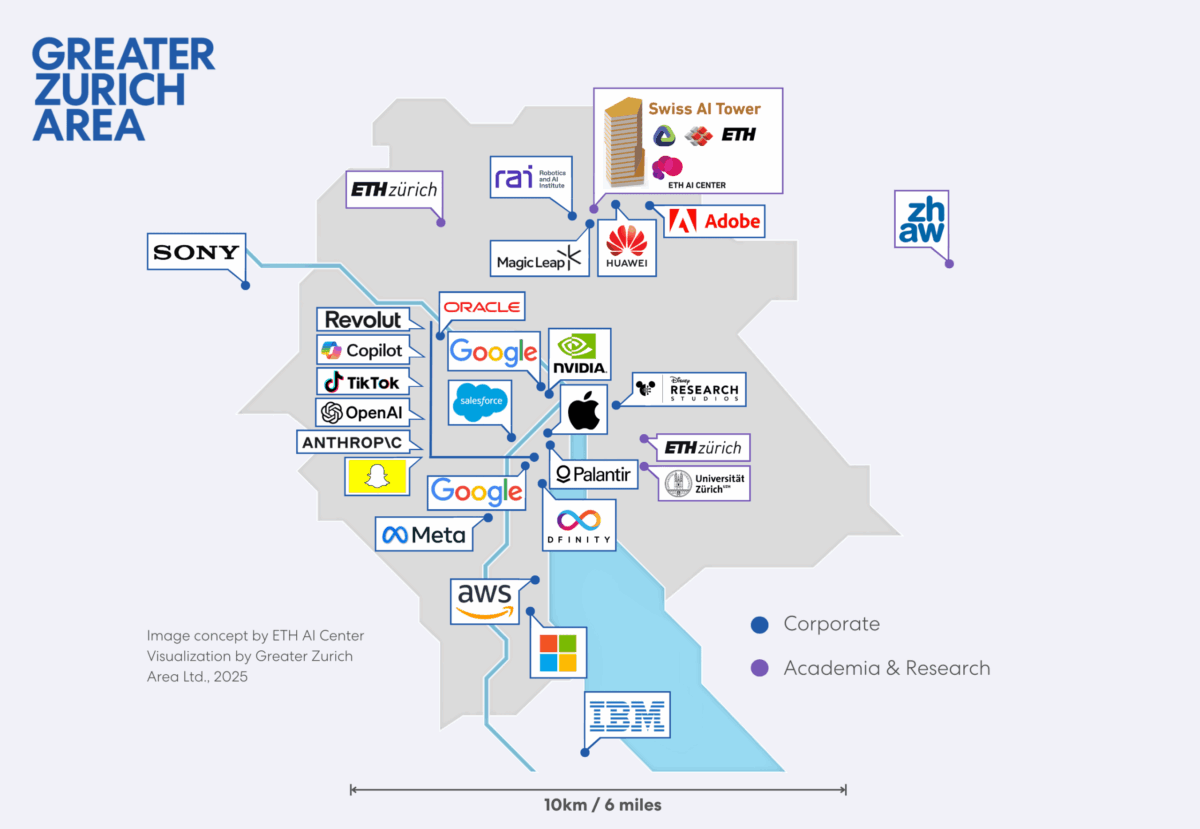
What’s really exciting about this is that it’s no longer purely academic: the Swiss model blends high-level research with a culture of spin-offs and applied ventures. Notable AI startups include:
- Unique AI (AI for finances)
- LatticeFlow (AI robustness and explainability)
- Synthara (neuromorphic chip design)
- Cradle (AI for protein structure and drug design)
The Swiss government plays a catalytic role. Initiatives like Innosuisse grants, the Alps supercomputer, and the Swiss AI Initiative offer support for both early research and applied development. Zurich is particularly competitive here, having recently passed a resolution which will create an AI Sandbox, infuse an extra CHF 2.9 million in capital for startups, and provide AI enablement services for SMEs. The country as a whole is also developing a framework for autonomous driving.
For international investors, the key takeaway is this: Switzerland doesn’t produce volume: it produces depth. Its AI startups may be fewer in number, but they are often IP-rich, scientifically grounded, and engineered for global scalability.
Why Swiss AI Is a Prime Target for Investment
For AI investors, Switzerland pairs a buzzing ecosystem with a dense concentration of top‑tier talent and global tech leaders. Add generous local incentives, world‑class technical universities, iron‑clad data‑privacy laws, and rock‑solid political stability, and the country stands out as a prime investment ground. Rising stars such as inait SA and Unique AI already deliver alpha‑grade deal flow. On top of that, Switzerland offers:
- Non‑dilutive public R&D grants and targeted tax breaks
- A high concentration of university spin‑offs generating defensible IP
- Transparent, predictable regulation and uncompromising IP protection
Unlike Berlin or Paris, where growth is often top-down and momentum-driven, the Swiss model scales bottom-up: deep science, early validation, and efficient capital deployment. This makes it particularly attractive for international investors seeking strategic long-term bets with global applicability.
With increasing exit potential, more M&A activity, and a growing number of startups entering later-stage funding rounds, Switzerland is evolving from being primarily a research hub. It’s an emerging AI scale-up ecosystem, and inait SA is a bellwether of what’s to come.
FAQ on inait SA
1. What is a digital brain?
A digital brain is a replica of a biological (mammal) brain. In the last two decades, the Blue Brain Project has built the worlds most accurate digital brain.
These brains and their simulation laboratories are today made available to the global scientific community via the Open Brain Institute. inait SA partners with the Open Brain Institute for using these digital brains for commercial applications, notably in AI.
2. What is AI with digital brains?
AI with digital brains (or how inait calls it “adaptive AI”), is a biologically inspired software model that simulates how mammalian brains learn, adapt to ever changing environments and reason.
inait has developed its proprietary operating system for the use of digital brains (inait calls it “inait neural code”) and a proprietary algorithm to teach these digital brains (inait calls it “inait learning algorithm”).
Unlike conventional AI, which relies on pattern recognition and correlations requiring massive data and energy for training, digital brain AI uses causal learning to make decisions and generate insights.
3. How is this different from traditional neural networks?
Traditional neural networks are trained on large datasets to recognize statistical patterns. inait’s digital brain AI simulates how neurons and synapses interact and adapt in real time, allowing them to learn from experience and apply learnings across different tasks. inait’s has defined the key performance indicator for measuring progress for AI that aims for cognition as AI that can learn additional tasks more and more easily, and not harder and harder as in today’s conventional AI.
4. What is causal learning, and why is it important?
Causal learning refers to understanding the relationship between actions and outcomes. This approach allows systems to not just predict what might happen based on the dataset it was trained on, but to create a link between cause and action, enabling better adaptability to changing environments and ultimately reasoning.
5. Is Digital Brain AI the same as neuromorphic computing?
Not quite. Neuromorphic computing is typically hardware-based, aiming to replicate brain-like function in silicon. Today’s applications of neuromorphic computing is limited, while neuromorphic chips are more energy-efficient than traditional AI, they cannot fully replicate traditional AI performance and are very costly to build.
inait’s digital brain AI is a software model that simulates biology in code, offering much more flexibility and modularity for continuous innovation and commercialization. At a later stage, with inait’s software paradigm proven in a number of industry use cases, embedding it in hardware would be a logical next step.
6. Can digital brains work with large language models?
Yes. inait’s architecture supports what it calls “Fusion AI,” i.e. combining digital brains with LLMs, CNNs, etc. to create systems that can access and process language and any other data, to take advantage of the huge progress made in AI in recent years. LLMs are also used for interfacing with users.
7. What are the advantages of inait’s approach?
AI with digital brains requires much less data and less training, can adapt in real time in a virtual or real-world environment. These AI models can also operate in environments with limited data. This makes them ideal for high-stakes or rapidly changing contexts like stock markets or robotics. While the focus of inait is currently on creating more intelligent systems, ultimately these systems, like biological brains which are extremely energy-efficient, will also be able to operate in a more energy-efficient manner than traditional AI.
8. Is this a step toward AGI?
AGI has various definitions and inait avoids talking about AGI. inait’s systems embody generalizable intelligence: AI that learns, adapts across tasks and changing environments, and reasons, drawing us closer to artificial intelligence systems that have an understanding of the world around them.
More Content
-
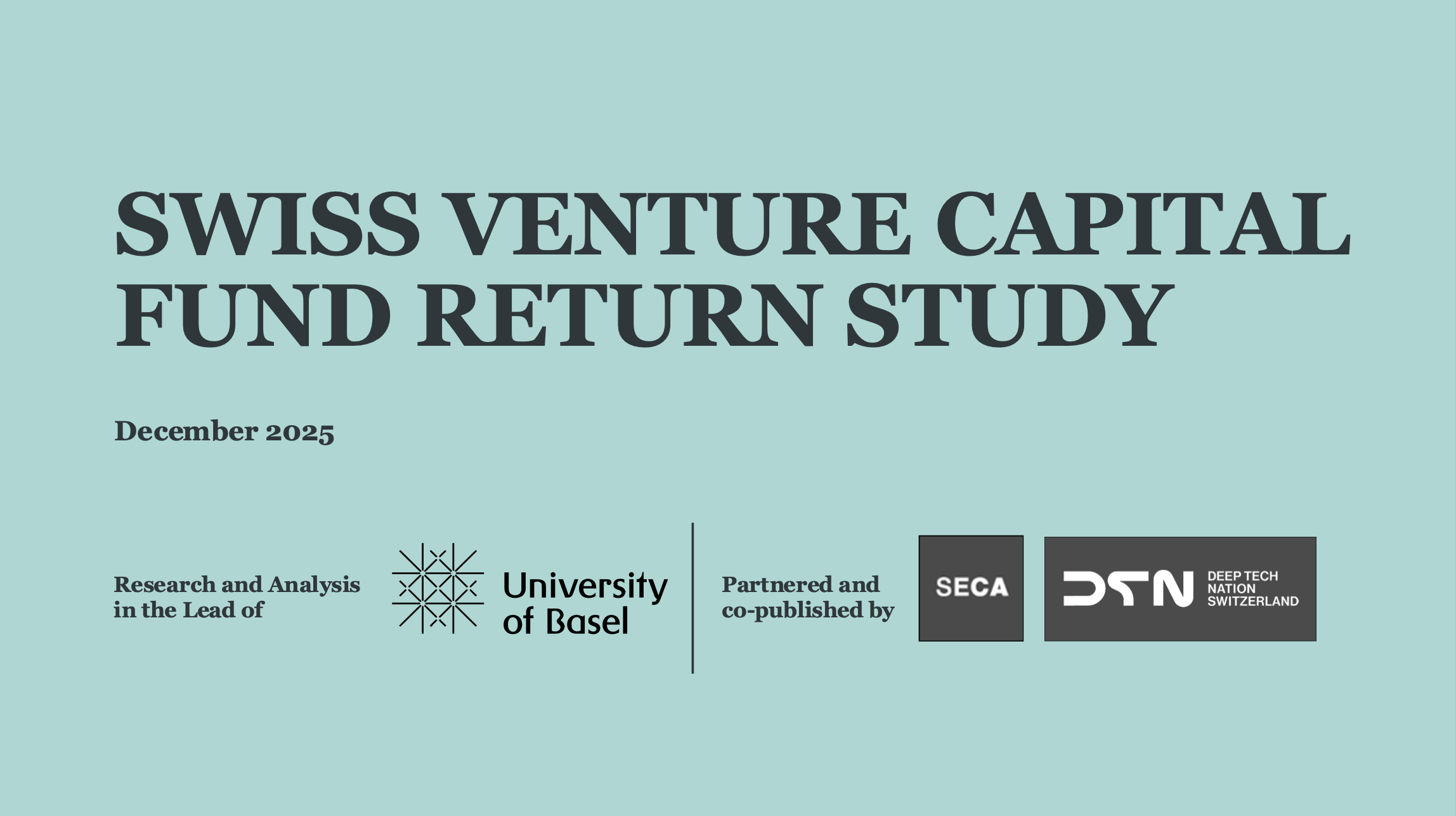
For years, institutional investors have cited the same obstacle when asked about venture capital allocation: insufficient performance data. Without a credible benchmark, Swiss pension funds…
-

One in three sick notes in Switzerland stems from mental health issues, with workplace stress as the primary culprit. As the World Health Organization (WHO)…
-
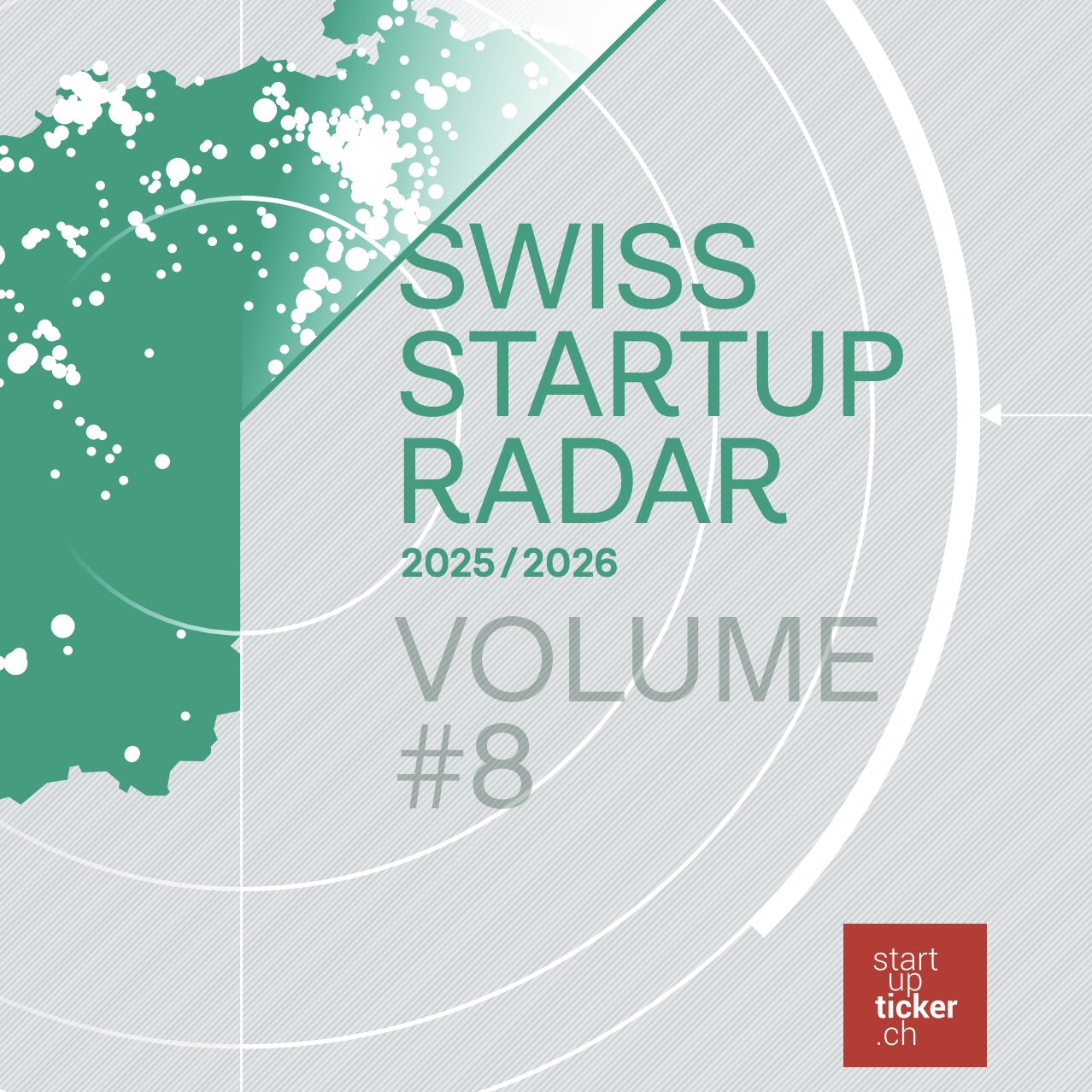
For years, the global narrative regarding European innovation has been consistent: excellent research, strong early-stage formation, but a fragmentation that hampers growth. However, new data…